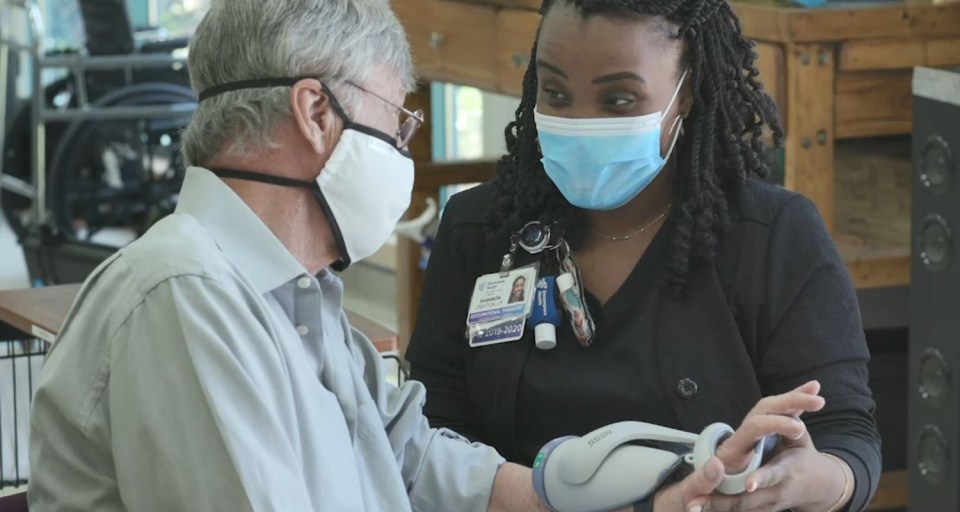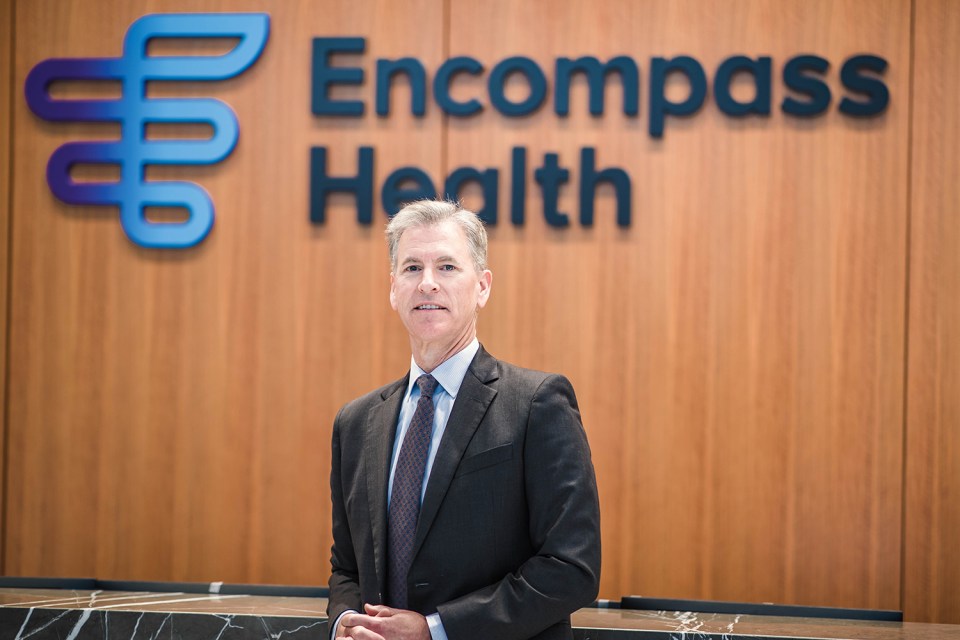Encompass Health finished strong in 2018, completing the rollout of its new brand and name and is poised for another year of growth in 2019, Mark Tarr, the Company’s president and CEO, told investors at the 37thAnnual J.P. Morgan Healthcare Conference. Held Jan. 7-10 in San Francisco, the conference is one of the largest healthcare conferences for investors. Here are five takeaways from Mark’s presentation on the state of Encompass Health and its strategy in the new year.
- Collaboration will continue to be key. The rebranding brought the Company’s two business segments – inpatient rehabilitation and home health and hospice – under one name with the goal of integrating care between the two segments in markets where there is both an Encompass Health hospital and a home health location within the service area. As of December 31, 2018, the Company has 81 overlap markets, and its clinical collaboration rate, the percentage of patients who leave an Encompass Health hospital to enter its home health, continues to climb, nearing 35 percent.
“You’ll see that we’ve made very nice progress on this collaboration percentage,” Mark said. “Our near-term goal that we’ve stated on this is to reach 35 to 40 percent, so we’re well on our way of reaching that near-term goal.” - 2019 will be another year of growth. The Company will continue to focus on growth of both business segments with a goal of opening four to six new hospitals this year. Though only a few weeks into the new year, the Company is well on its way to reaching its growth goal in the inpatient rehabilitation segment with four new hospitals already set to open later this year. Encompass Health plans to invest another $50 to $100 million in home health and hospice acquisitions this year, as well.
- Building on the success of its stroke program will be a priority. Of Encompass Health’s 130 inpatient rehabilitation hospitals, 112 hold stroke-specific certifications. Given the overall need – Mark noted some 800,000 strokes occur in the U.S. each year – building on the Company’s clinical capabilities to treat stroke patients has and will continue to be a priority.
“Now not all those patients will need post-acute care,” he added. “But you can see a large number of those patients will need either inpatient or home health or a combination of the two.”
Encompass Health and the American Heart Association/American Stroke Association recently announced their sponsorship of “Together to End Stroke,” in an effort to educate the public on stroke care and stroke prevention. - Encompass Health to offer post-acute solutions. As one of the nation’s largest networks of post-acute providers, Encompass Health is using its clinical expertise and large, post-acute database and EMR technologies to produce predictive models with the goal of ensuring patients are placed in the proper post-acute setting and not readmitted to an acute care hospital. In 2018, the Company piloted a 90-day post-acute readmission model in its Tyler, Texas hospital; a second pilot launched in November in Petersburg, Virginia.
“So you’ll be able to see us continue to enhance our capabilities in this area,” Mark said. “It’s something that we can do that no other post-acute provider can do because of the investments that we’ve made in both segments relative to our IT platform.” - The Company is well-positioned to adapt to regulatory changes. Encompass Health has been running the CARE Tool and FIM™, Functional Independence Measure, simultaneously since the fourth quarter of 2016 in its inpatient rehabilitation segment. For reporting and payment purposes, CMS is replacing the FIM™ measure with the CARE tool measures effective Oct. 1, 2019. This change will likely impact Medicare revenue per discharge for certain cases. Encompass Health is also preparing its home health segment for implementation of the Patient Driven Groupings Model (PDGM). Starting in 2020, the PDGM will go from 60-day episodes for payment to 30-day payment periods. “It relies more heavily on the clinical characteristics of the patient, and it will eliminate therapy service use thresholds in case-mix adjustments, which we’re supportive of,” Mark said.
What the Company disagrees with is that CMS assumed behavioral changes will offset a 6.4 percent reduction in the base rate. Mark said the Company would continue to provide feedback and work with CMS and trade associations to ensure the questions surrounding these adjustments are fully answered.
“So, in spite of the changes, we feel that we’re very well-positioned as a company to embrace these changes,” Mark said.
For the full transcript and presentation click here.
The content of this site is for informational purposes only and should not be taken as professional medical advice. Always seek the advice of your physician or other qualified healthcare provider with any questions you may have regarding any medical conditions or treatments.



